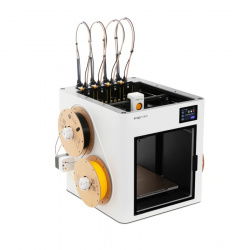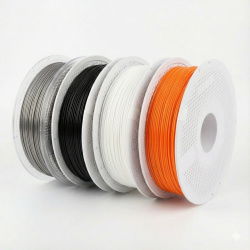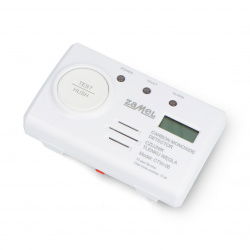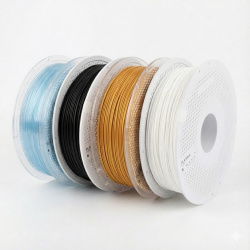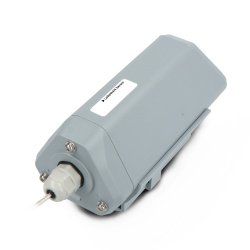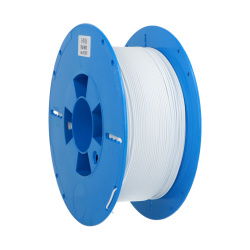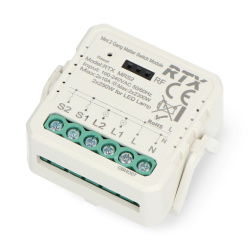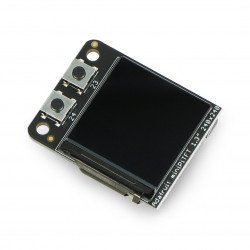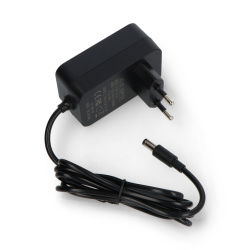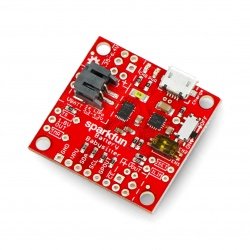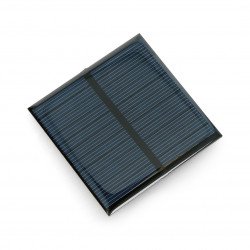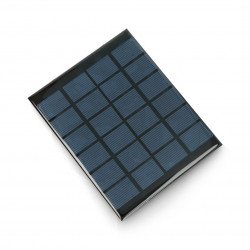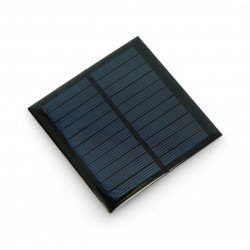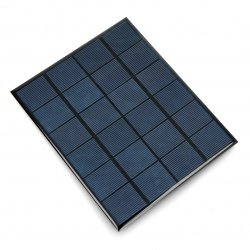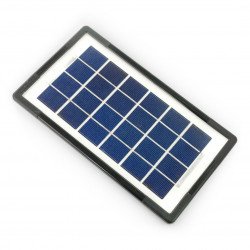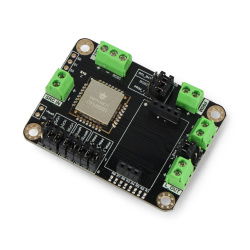Polycrystalline solar panels
Solar cell 0,4W/5,5V 65x65x3mm
A 0.4 W solar cell with an output voltage of 5.5 V. The dimensions of the plate are: 65 x 65 x 3 mm . The outputs are pads for solder cables.Solar cell 0,7W/5,5V 95x95x3mm
A 0.7 W solar cell with an output voltage of 5.5 V. The dimensions of the plate are: 95 x 95 x 3 mm . The outputs are pads for solder cables.Solar panel 3,5W/6V 165x135x3mm
Solar cell with 3.5 watts of power and an output voltage of 6 volts. The dimensions of the board are: 165 x 135 x 3 mm. Leads are pads for soldering the wires.Solar cell 1,2W/9V 115x115x3mm
A 1.2 W solar cell with an output voltage of 9 V. The dimensions of the plate are: 115 x 115 x 3 mm. The outputs are pads for self soldering of cables.Indoor ambient energy harvesting kit - DFM8001 - DFRobot KIT0197
The DFRobot brand kit is a comprehensive solution for indoor energy harvesting from various sources , such as mechanical, thermal, solar and radio energy. It includes the...Green energy from solar panels
Solar panels allow for the generation of electricity from solar energy. This is one of the most environmentally friendly, cheapest and safest ways to generate electricity. Their application is extremely wide - they prove themselves both as an element of photovoltaic installations in private homes, industrial plants or solar power plants, as well as in the form of panels supplying electricity to battery-powered devices (or mains-powered with battery backup). Solar cells can be found in calculators, remote-controlled vehicles or mobile robots, for example. You can also use them to build a solar charger for your phone or computer. They also supply electricity to garden and street lamps, to boats and yachts or to research stations far away from civilization. The advantage of such a solution is self-sufficiency - after installing a properly constructed photovoltaic installation equipped with batteries collecting electricity and connecting it to the building's electrical network or to the power supply system, such an object becomes completely independent of the power network.
Polycrystalline photovoltaic cells
Polycrystalline solar panels are one of the two most popular types of photovoltaic cells available on the market today. They can be recognized by their blue colour and visible crystal structure, as well as rectangular or square shape of individual sections. Polycrystalline photovoltaic cells are made by crystallising silicon, which is heated to a high temperature and then combined into a large block, cooled and divided into smaller, thin slice-like parts. Once the cells are connected and properly prepared (including the connection of wire leads or the application of anti-reflection coating), polycrystalline solar panels are ready for use. The efficiency of this type of panel oscillates between 14-18% and is the higher the larger the crystals forming the individual cells. This is because the energy-bearing electrons have more freedom of movement.
Monocrystalline or polycrystalline solar panels?
The choice of the type of photovoltaic panels using silicon crystals is not clear and largely depends on the intended use and conditions. Monocrystalline cells are more efficient, but their price (also per kilowatt of power) is higher - this is because their production process is more complicated and generates more waste that needs to be recycled (this is also slightly less ecological). They will work well in places where the photovoltaic installation must be in a very limited space. Polycrystalline solar panels, on the other hand, are better at using scattered and reflected light, so it is worth reaching for them when the system is to be used in less optimal conditions for photovoltaics (for example, in high clouds or in slightly shaded areas).
What products can you find in our offer?
In our shop you will find a wide range of polycrystalline solar panels of different power and different technical parameters. Among other things, we offer models designed for use in vehicles and mobile robots and other electronic projects. Our range also includes many accessories for photovoltaic cells (cables, extensions and splitters, chargers, charging controllers or control modules) and a wide range of monocrystalline solar panels. In Botland's shop you will also find products for special applications - among others, coiled or folded panels or waterproof models, as well as ready-made solar power modules with cells, cables and controls (for example, a set for solar-powered electronic projects from DFRobot).






























































































































































































































































































































